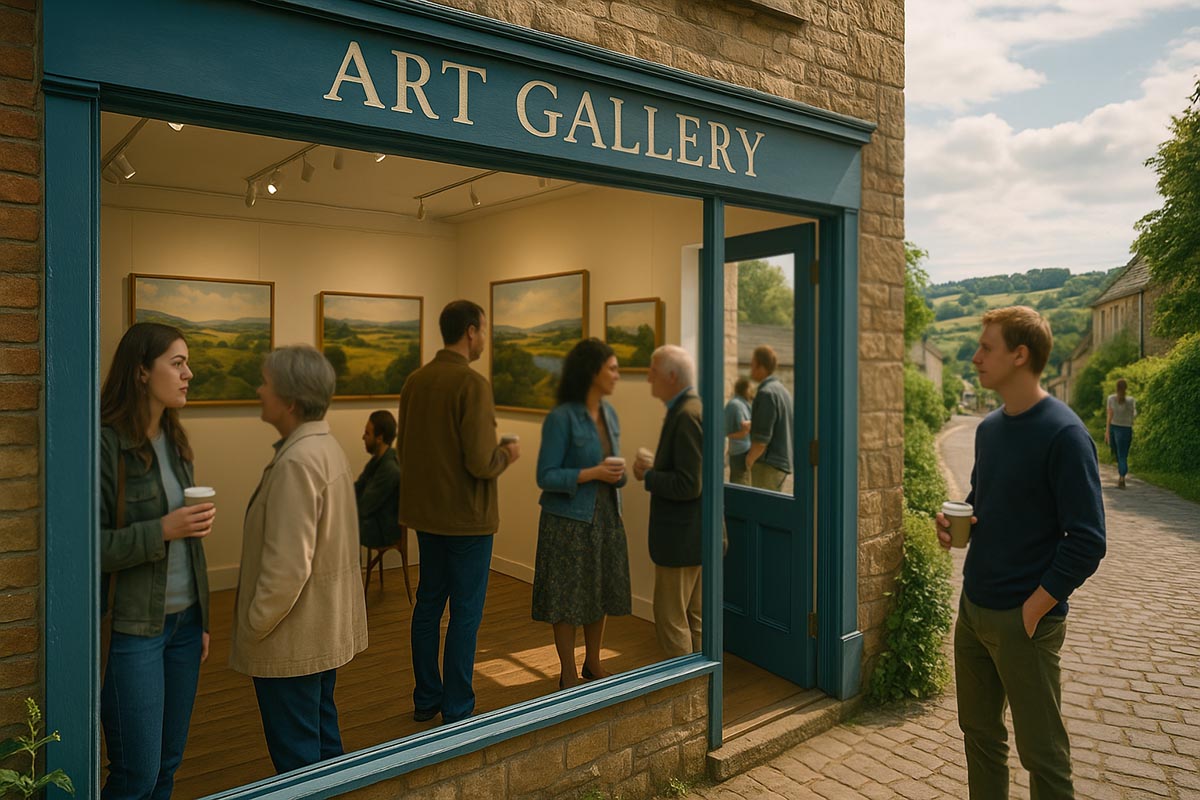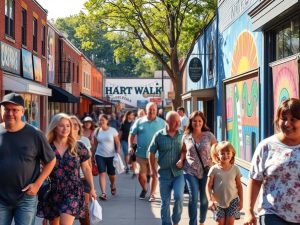
Creative Spaces in Rural Areas: A Quiet Force of Local Transformation
Towns in the countryside are gaining new energy thanks to emerging spaces dedicated to creativity. These are not just places where artists gather—they’re becoming vital areas where communities learn, connect, and grow. As time passes, many local communities have realized that culture and the arts can help support their economies and uplift everyday life.
Whether it’s a small village in South America or a farming town in Asia, creative centers are making a noticeable difference. They offer new opportunities, attract curious visitors, and encourage residents to take part in shaping a shared identity. Let’s take a closer look at how this movement is making waves in different regions and what other communities can learn from it.
Quick Overview:
Creative spaces in rural areas offer opportunities for local artists, help attract visitors, and spark tourism growth. These spaces are often built through collaboration between local governments, private groups, and artists.
From students and small businesses to families and elders, everyone can participate in workshops, exhibitions, and community events. This article also covers the challenges that these spaces face and the clever solutions used to keep them alive and thriving.
Why Creative Centers Matter in the Countryside
Creative spaces bring out the unique stories and character of rural communities. Some towns may be slow in development, but when an art studio or gallery opens, it brings a fresh vibe. These places become a stage for painters, sculptors, musicians, and storytellers.
They also support fields like writing, graphic design, and new forms of visual storytelling. With these platforms, rural artists finally get the spotlight they deserve.
Another major impact is on tourism. Visitors—local and foreign—are drawn to artistic displays like murals, interactive exhibits, or small performances. This rising interest brings more business to local eateries, shops, and accommodation providers. Gradually, the once-quiet countryside gains a reputation for its creative energy.
Education is another area that sees a boost. Workshops and classes held in these hubs give young learners a chance to develop real-world skills like photography, music, or digital arts. Since local artists often lead these sessions, the knowledge passed on becomes deeply rooted in culture and experience.
Examples from Across the Globe
A Reimagined Train Station in France
In northern France, a former train station has turned into a lively center for the arts. What used to be a ticket office is now a gallery, while nearby rooms function as workspaces for illustrators and writers. Every Saturday, open photography sessions are held outdoors. Funded by local authorities and supported by a charity foundation, this project has brought more visitors to the town and offered paid work to ten local artists.
A Makerspace in Western India
In Gujarat, a small town transformed its old public market into a makerspace. Young people come here to learn robotics, woodworking, and even 3D printing. Monthly events include open mic nights and art exhibits. The impact goes beyond the youth—mothers also learned how to create handcrafted goods and now sell them online. Within six months, those involved in the program saw a 40% increase in income.
A College of Indigenous Arts in South America
In the mountains of Ecuador, a small college was established to preserve native traditions. Students are taught how to weave and paint using natural dyes. They also receive lessons in online selling so their handmade goods can reach international buyers. During its first year, the school successfully exported fabric to Europe and North America, helping generate income for the whole village.
How Communities Benefit from Creative Hubs
The influence of creative hubs can be seen far and wide. First, they give local talent a place to shine. Cities are often seen as the heart of art, but more and more rural stories are being heard—stories that reflect the roots and identity of a place.
There’s also stronger cooperation between local governments, businesses, and community groups. When these forces work together, it’s easier to launch and sustain programs and secure funding.
In addition, residents begin to feel more connected to their hometowns. Whether it’s through public art walks or community open houses, people feel proud to be part of something meaningful. These connections also strengthen ties between neighboring villages, giving rise to regional art networks.
Facing Challenges and Finding Smart Solutions
These projects are not without obstacles. The most common struggle is funding. Many creative spaces begin through the hard work of volunteers. Often, there’s a shortage of equipment or materials—sometimes all they have is an outdated camera or a basic printer.
Another issue is management. Running a space like this requires not just artistic vision but also skills in planning, promotion, and budgeting.
To solve this, some groups partner with universities or tech companies. These partners offer training, tools, or mentorship. In other towns, residents run online fundraisers or host special events to earn money.
There are also cases where creative hubs earn through services—such as ticketed workshops or selling limited-edition prints. This allows them to continue operating without relying only on donations.
Connecting Through Technology
Modern tools are a big help in reaching wider audiences. Thanks to social media, rural creators can share their work with people around the world. Livestreamed classes allow learners from distant locations to participate.
Beyond online lessons, shared digital platforms support teamwork between artists. Collaborations can happen regardless of distance, building bridges between urban and rural creativity.
These collaborations also promote skill exchange. City-based artists often visit to lead training or lectures, while local artists offer lessons in traditional methods. This mix results in fresh styles and techniques that meet current demands.
Support from Public and Private Partners
For projects to continue, they need more than passion—they need support. Some local governments give small grants to art-focused community efforts. Others assist with construction or provide spaces at reduced rental fees.
Meanwhile, companies also contribute by sponsoring events or donating materials. In some cases, long-term partnerships emerge. A musical instrument supplier may offer discounts, or a tech firm might provide free software access. These gestures go a long way in helping creative hubs grow and remain active.
Looking Ahead
All around the globe, communities are beginning to appreciate the role of creativity. Even in far-off villages, the spark of imagination is alive. This growing movement has the power to boost local economies and nurture fresh talent.
Its success lies in cooperation and a shared belief that art can build stronger, more vibrant towns. When residents, leaders, and supporters come together, they form a solid base for long-term growth.
There are many doors open for those curious to take part—whether it’s through a modest gallery in Europe or a workshop in South America. The world welcomes everyone who values culture, community, and creativity.
Through teamwork and the right guidance, any creative space—no matter the size—can become a model of cooperation and local growth.

